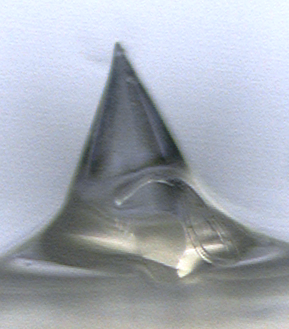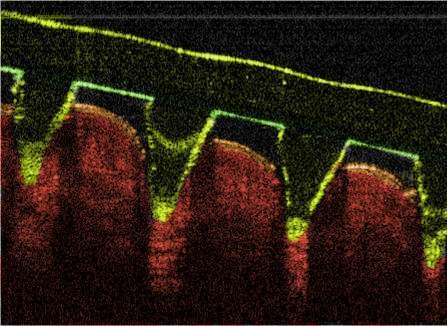How do microneedles deliver drugs?

It's been quite a couple of years for Dr Ryan Donnelly from the School of Pharmacy at Queen's University Belfast (QUB), who this week speaks at the BioIndustry Association (BIA) UK Bioscience Forum. At the forum he'll be discussing the development of his BBSRC-funded microneedle technology that could revolutionise the way drugs are delivered – from small molecules to vaccines and biological compounds.
The microneedle patches, which can range from the size of a phone sim card to the size of a mobile phone, are applied to the skin like a normal medical plaster. What makes Donnelly's system special compared to similar emerging 'needleless injection' platforms is that his array of just over 300 microneedles – each just over half a millimetre high – are made of biocompatible hydrogels that are not toxic to the human body, but can also take up biological fluids and so lead to new ways to monitor metabolites, such as blood sugar in diabetes, in the sick and healthy.
"Microneedles are great way of delivering vaccines, peptides, proteins and other biotech-derived drugs in a minimally invasive way, painlessly and without drawing blood," says Donnelly. "And because the microneedles are in contact with the interstitial fluid just under the skin, this is a good way to indirectly monitor medicines and metabolites in the body."
Donnelly says that premature babies could be an ideal candidate for first use of the technology for micro-monitoring because their bodies are fragile and not well suited to repeated use of needles, but the need to monitor their health without drawing too much blood is great during their first hours. Roadside tests for illegal drugs are another possible use, and first-on-the-scene paramedics could also use the microneedles to test whether it is safe to administer certain compounds to people who are not conscious, for example, and may be on other drugs themselves.
Big things from small beginnings
The last two years saw Donnelly pick up a clutch of awards as interest in the technology has grown. In 2012 he netted the inaugural QUB Improvement to Society Award and then the 2012 GlaxoSmithKline Emerging Scientist Award, which is presented annually to scientists from across the globe who have demonstrated significant practical application of knowledge within the pharmaceutical sciences.

Then he scooped the top gong at BBSRC's flagship Fostering Innovation event in 2013 which recognises scientists whose research has and will demonstrate major impact, the Overall Innovator of the Year.
Following his first grants from BBSRC to develop and demonstrate the technology, Donnelly has used grants from EPSRC, The Wellcome Trust, the Royal Society and Action Medical Research to further refine and test both the drug delivery and metabolite monitoring functions.
In 2013 he was awarded a £710,000 Super Follow-on Fund from BBSRC to bring the microneedles closer to clinical use.
"We have developed key performance specifications for our novel microneedle platforms and are using these to assess microneedles prepared by innovative scalable manufacturing techniques," he says. "This is the key to taking this innovative technology to clinical trials, commercial realisation and, ultimately, patient benefit."
Market potential
Donnelly says the market for delivering drugs across the skin is worth around USD$20Bn a year, but that's with just 20 drugs. If just a few new compounds could be demonstrated as safe and effective, new markets could be opened worth hundreds of millions, each and every year.
And there are many benefits for different patient groups. Some people are scared of needles, and a microneedle patch may be much more acceptable. Conventional needles are also subject to costly disposal methods, and can be reused whereas microneedles become soft upon first insertion and so cannot be used again, or inserted into another person by accident, or maliciously.

An optical coherence tomography image of the 600µm microneedles piercing skin.
Elderly patients who might forget to take their medicines might also benefit, as would people who are required to take many medicines and whose stomachs are beginning to feel the strain. For millions of patients who required all sorts of treatment, microneedle patches that only need to be applied twice a week without having to take time out to visit a healthcare centre or professional would greatly improve their treatment options.
Donnelly also notes that delivering drugs across the skin leads straight into the systemic circulation, and so a lower dose could be delivered that might result in fewer and less severe side effects.
"If we're going to take this technology forward to patient benefit we must make them on a large scale," Donnelly explains. "But we're also developing methods for reliable patient insertion. Because they are inserted into the skin painlessly we need some feedback for the patient and that's what we're working on now."

















